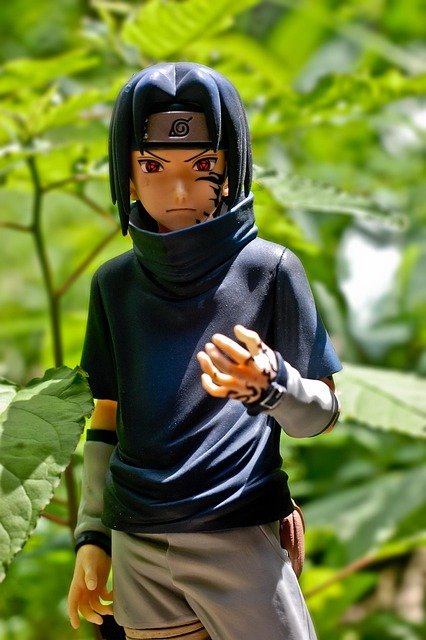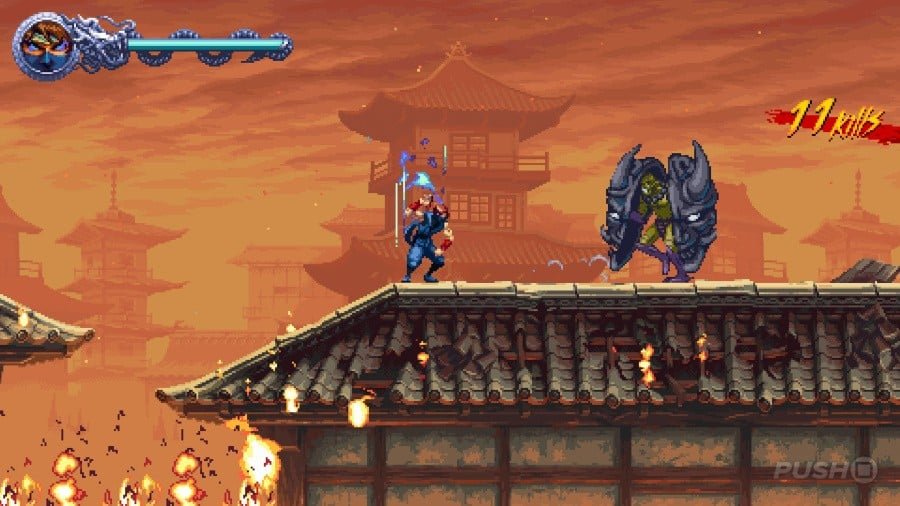
The Ninja Gaiden series has been around for a long time, and it’s changed a lot, moving from 2D action platforming to full-on, big budget, 3D adventures. While many will know the franchise from these later hack-and-slashers, the most recent entry, Ninja Gaiden: Ragebound, winds back the clock, taking us back to its side-scrolling origins — and it’s a big success.
Taking place during the events of the very first game, Ragebound follows Ryu’s apprentice, Kenji, who has his own mission to attend to, preventing a full-on demon invasion.
Inadvertently, he ends up having to ally with Kumori, a member of the Hayabusa family’s sworn rivals, the Black Spider clan. With her power infused within Kenji’s body, the pair work together, granting the player the abilities of both characters in one.
It’s a neat setup for a simple story that provides some context for a game giving you lots of enemies to slice up across varied locations.
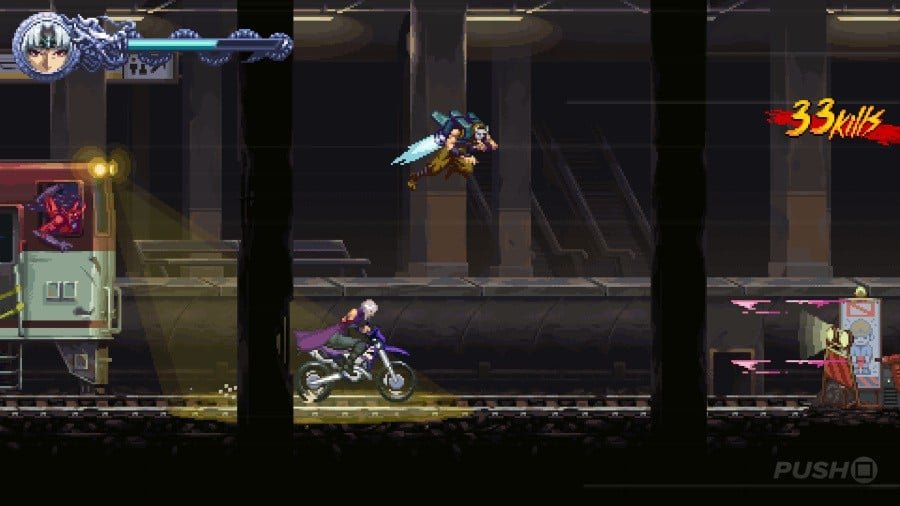
Essentially, Ragebound is an action platformer with a focus on super fast combat and moving swift as a ninja. It’s the sort of game that demands slick movement and intuitive controls, and fortunately, this is one of its greatest strengths.
It feels super responsive and very satisfying to move through each environment and take down all who stand in the way.
The Guillotine boost, a mid-air move that lets you hit projectiles and enemies to extend your jump, isn’t a new idea, but it fits like a glove in Ragebound. Combined with all the wall jumps and dodges you’ll be pulling off, movement is more or less exactly what you’d want from a game like this.
Most enemies go down in one hit, whether from Kenji’s melee strikes or Kumori’s kunai projectiles. However, some are tougher, taking several strikes to eliminate. Defeating them becomes much easier with the Hypercharge system, however.

Certain enemies will have either a blue or pink aura around them. Take them down with the corresponding attack (melee for blue, kunai for pink) and you’ll become Hypercharged, meaning for a limited time, your next attack is seriously amped up. You can use this to cleave stronger enemies in half with one hit.
Some sequences will have you chaining these attacks together, and it feels satisfying every single time.
The system adds a nice wrinkle to what would otherwise be fairly one-note combat. There’s a good amount of enemy variety, and encounter design is mostly very good, forcing you to use all your tools and testing your skills constantly.
There are some occasions where enemy placement is devilish, or boss fights come at you with attacks that are extremely difficult to avoid, but these frustrations are few and far between.
Level design is largely very strong. These are almost entirely linear stages, but they’re very enjoyable to move through thanks to some great locations and scenarios.
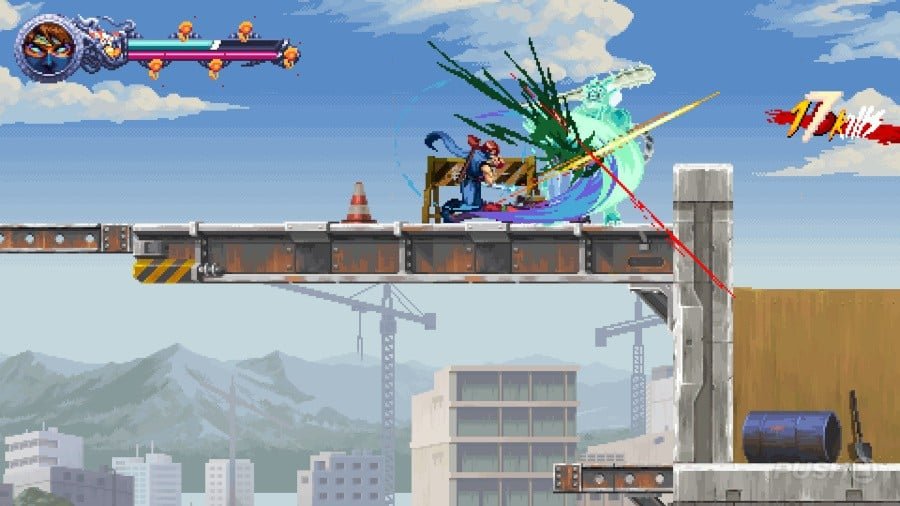
Once Kumori and Kenji join forces, the former becomes fully playable once again at specific demon gateways. These sequences give you a limited time to reach the end, using her kunai to rush through short platforming gauntlets.
It’s an interesting way to keep her fully involved in the adventure; rather than just supporting Kenji’s journey, her unique abilities are necessary for success.
Each level has lots of replay value, as well. They each end with a results screen, giving you a letter grade on your performance based on time, kills, and max combo, as well as a series of level-specific challenges.
Throw on top some hidden collectibles, and there’s plenty of ways for you to improve and attain those hallowed S ranks.
Though the game’s run time is less than 10 hours, the replayability, not to mention bonus levels called Secret Ops, means you can easily play for much longer. Upon finishing the game once, you’ll also unlock Hard mode, so there’s lots here for the most dedicated players to enjoy.
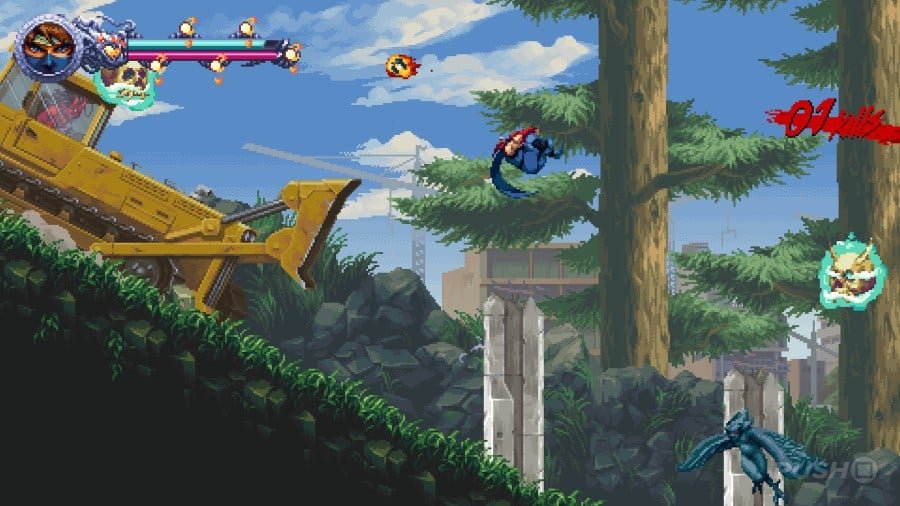
One aspect we’re less convinced by is the equipment you can employ. Using golden scarabs found in stages, you can buy passive Talismans to augment your abilities; things like increasing damage output when your health is low, or kunai attacks piercing through enemies.
These are perfectly fine and there are several good options, but less so are the Secret Arts, of which there are fewer to choose from and feel less consequential.
We would often forget about our Spider Weapon — a special attack that uses the same meter as your regular kunai attacks — and the powerful Ragebound Arts are very few in number, making the choice fairly meagre.
Even so, this is a pretty small bugbear; once you find a set of equipment that works for you, it does make a difference. We just wish there were more options, or reasons to switch things up.
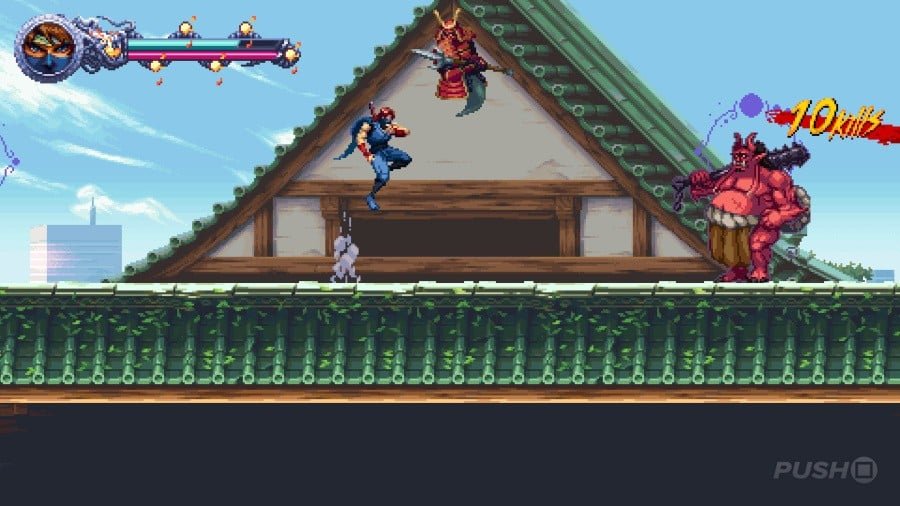
Whatever you go with, it’s all going to look fantastic thanks to a seriously strong aesthetic. The pixel art here is excellent, and it’s animated very well too. We love the direction taken here, with the visuals echoing the older games but with a fresh coat of paint.
Finally, we’d like to give a shout out to the flexible difficulty. The default difficulty feels perfectly pitched — Ragebound is a challenging game with some seriously tough encounters, and that feels right for the series.
However, if you find yourself stuck, an Assist mode can be enabled, allowing you to lower game speed and incoming damage, disable knockbacks, and more. It’s great to see these kind of options included.
By the same token, certain Talismans you can equip will increase the difficulty. For example, you can have it so death forces you to start the stage over, rather than return to a checkpoint, or increase damage received.
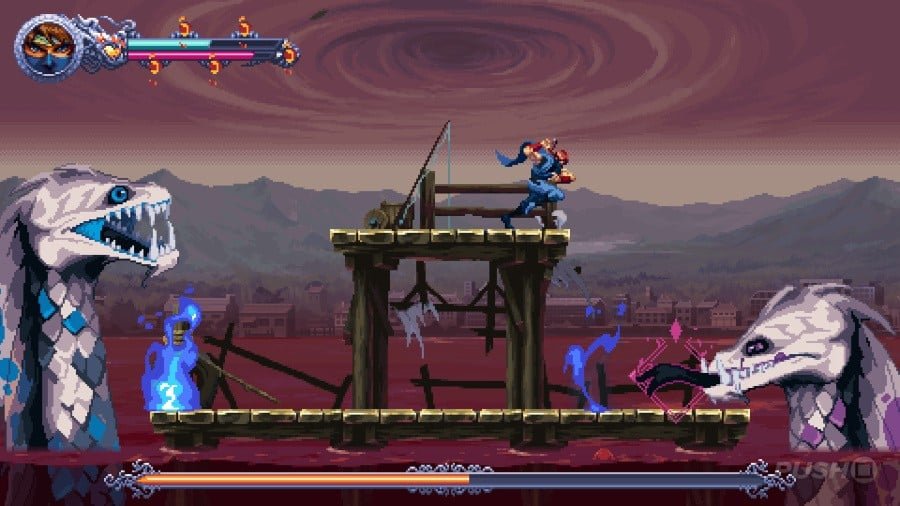
It’s great that there are lots of ways for players to find the right balance of difficulty. Ninja Gaiden has a reputation as a tough series, and that’s no different here, but making it so flexible feels like the right call, and it’s handled well.
Conclusion
Ninja Gaiden: Ragebound brings the series back to its roots with incredible style. The core gameplay feels fantastic, with satisfying, fast-paced combat and platforming that’ll put your skills to the test. With a wealth of challenges to meet and things to find, there’s a real richness to each level that gives it plenty of replay value. The wonderful art style is the icing on the cake, and aside from one or two small nitpicks, fans should be very pleased with this throwback adventure.

